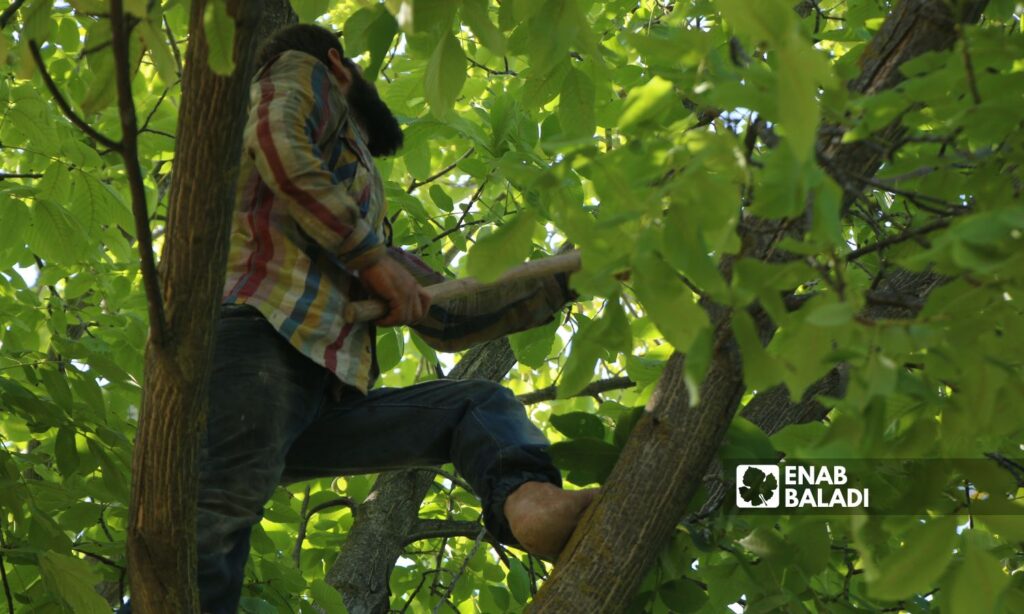Enab Baladi – Darkush
The fertile lands and abundant waters of the northwestern town of Darkush made a suitable environment for the growth of fruit trees, most notably walnut trees, on which most of the people of the Jisr al-Shughour region depend as a main source of income.
The large sizes of walnut trees, compared to other types of fruits, made the nut season one of the secondary for the farmers of Idlib governorate as the walnut trees need a large area of land, which most of the farmers of the region do not have.
Apart from the difficulty of its cultivation, the walnut crop is considered among the high-cost crops to produce, as it requires pesticides, watering, and fertilizers, in addition to labor costs when harvesting.
High costs
Walnut trees in Darkush need four to five times of pesticides annually to have a good season free from diseases and insects, the farmer Mohammad Omar told Enab Baladi.
Because of its constant need for watering, the high fuel prices increase its production costs, in addition to the high cost of harvesting, and because the walnut trees are high, their fruits are not picked but rather are shaken with large rods by specialized workers.
Omar, 56, explained that the costs of caring for one walnut tree amount to about 1000 Turkish liras (54 US dollars), including watering, fertilizers, spraying, harvesting, and peeling the fruits.
The selling prices of walnuts are considered “good,” but until the season of their sale, the farmer spends high amounts and exerts intense effort throughout the year, according to Omar, who added that “the prices before the revolution erupted in 2011 were much more than the costs of production, but this is rare today.”
|
Walnut is a perennial, deciduous tree, a genus of about 20 species of deciduous trees of the family Juglandaceae, native to North and South America, southern Europe, Asia, and the West Indies. It has been transferred to countries around the Mediterranean and Europe since the time of the Romans. The walnut is cultivated for the production of walnuts and fine, durable wood for the manufacture of luxury home furnishings. In Syria, it is considered one of the traditional and economically important crops. Its fruit production ranks first in the Arab world (about 16,500 tons annually), and its cultivation spreads in most of the Syrian regions, especially in Eastern and Western Ghouta suburbs near Damascus and the Orontes Plain. (Arab Encyclopedia, Britannica) |
Workers’ wages do not equal risk
Picking walnuts from tall trees is dangerous since it can only be harvested by climbing and shaking.
Walnut picking is a profession that requires experience and practice, which makes it a profession with high wages from farmers’ perspective, while workers see the wages as “not equal to the danger they face.”
Hassan Jabbour, 40, a worker in walnut picking, told Enab Baladi that he has been working in this profession for 15 years, stressing its difficulty, as the height of walnut trees can reach about 25 meters.
The danger of work is also related to accidents that can occur during climbing, for which only the worker bears the responsibility, Jabbour added.
In June 2021, the directorate of plant production in the Syrian regime’s agriculture ministry estimated the production of walnuts last season at about 12,000 tons, indicating that there are 800,000 walnut trees in Syria, of which 635,000 are fruitful trees.
According to the directorate, walnut cultivation is widespread in most Syrian governorates due to the availability of environmental factors for its cultivation, and it is considered a perennial tree, as it lives from 100 to 300 years.

